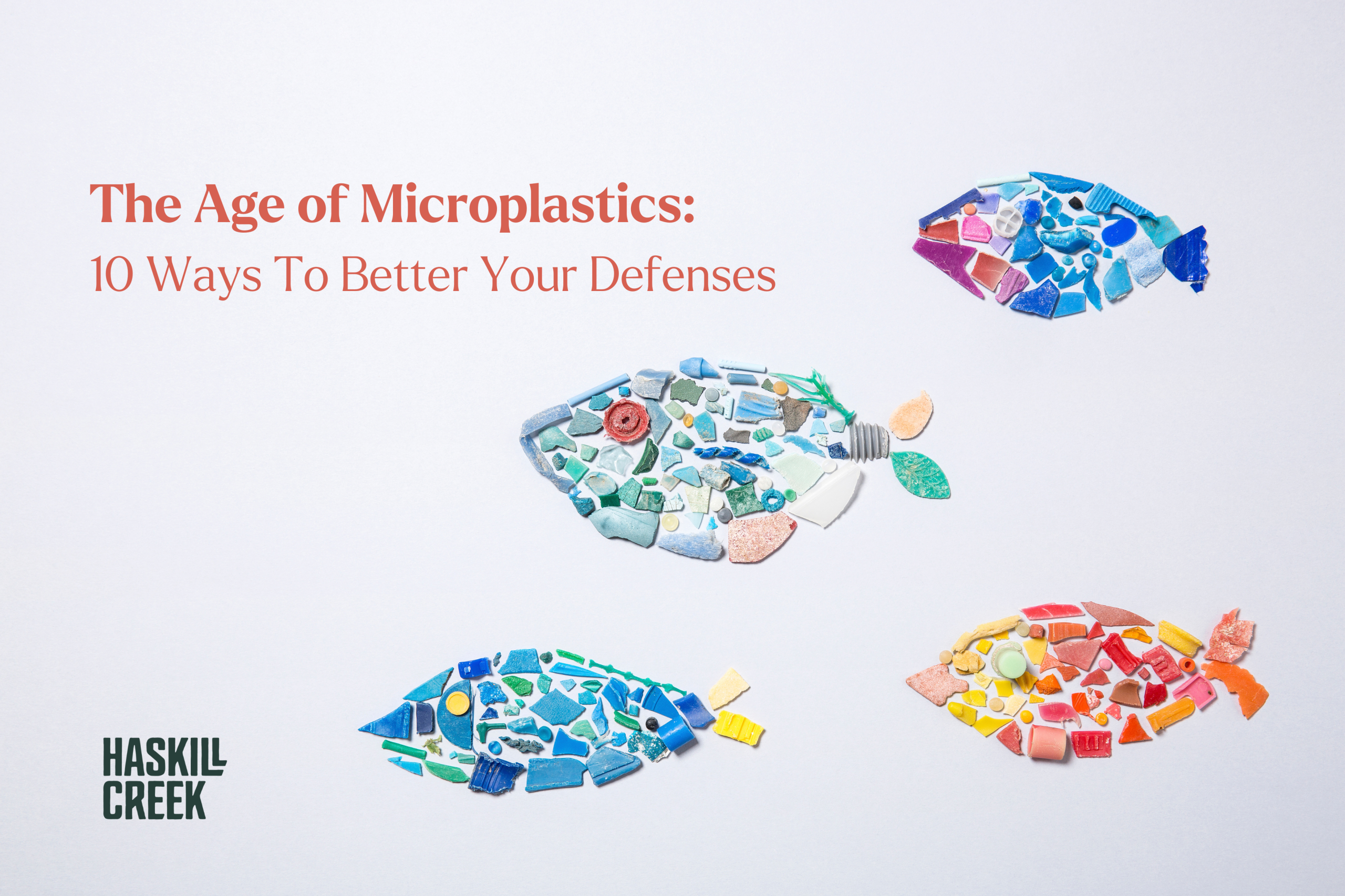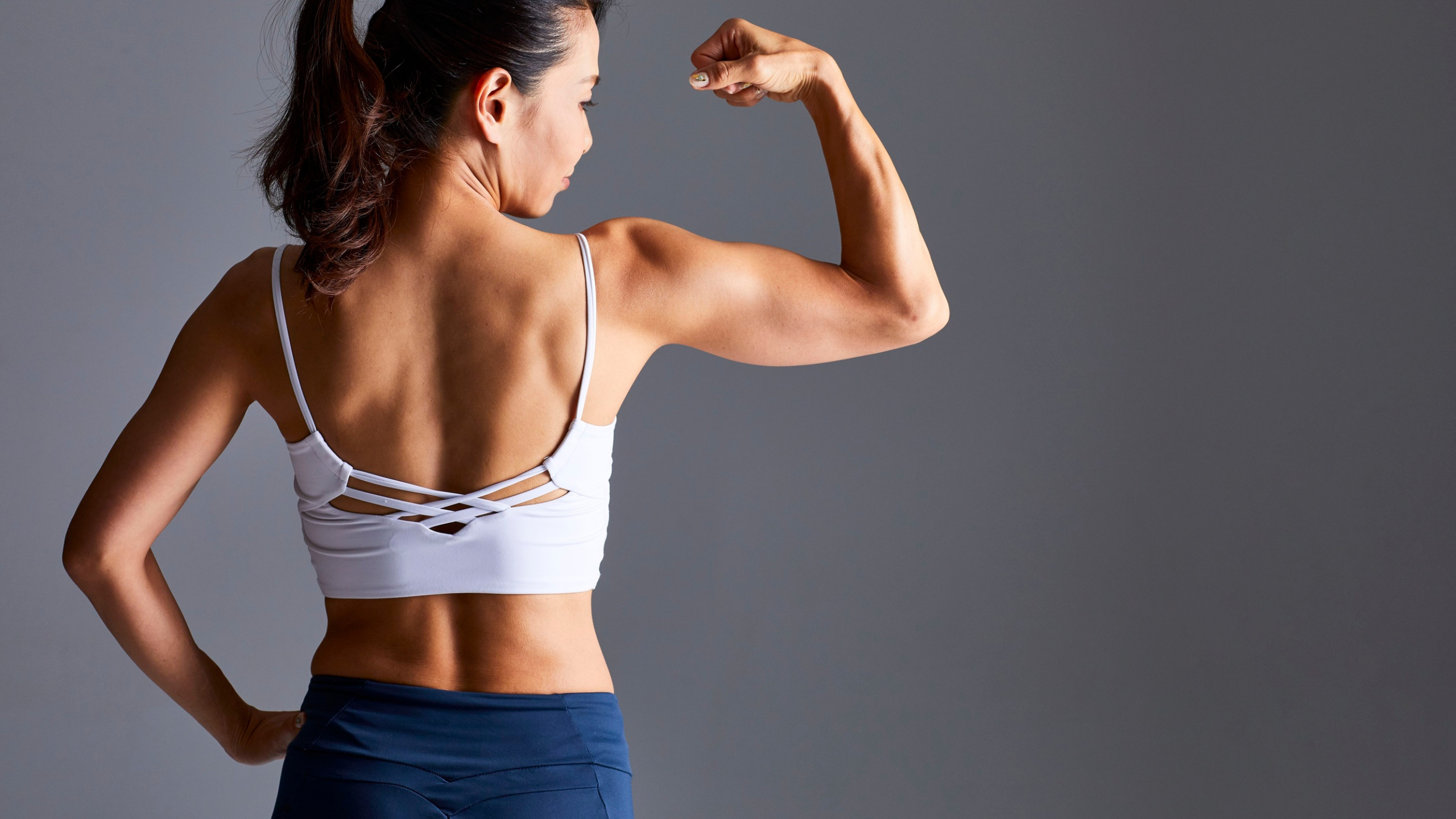The Age of Microplastics: 10 Ways To Better Your Defenses

I’ve been hearing a lot about microplastics lately. It seems like suddenly they’re everywhere; in our environment, in our marine life, and most recently, in our bodies. [1][2] The Environmental Working Group, or EWG recently reported the alarming metric that on average humans consume the equivalent of 12 plastic bags a year. [3] That’s certainly a startling visual. These microplastics, once an invisible threat, seem to be cropping up far and wide.
It sounds pretty scary, feels pretty overwhelming, and like a nearly impossible foe to conquer. But that’s not what this blog is about! This blog is about answering questions like: What are microplastics, anyways? How did we get here? And above all, what can we do about it? The hope is that you leave here feeling more informed, but more importantly- equipped with the actionable knowledge of what you can do about it.
What are Microplastics?
Microplastics are super itty bitty pieces of plastic ranging from 1 micron (1/1000 mm) to 5mm. (about the size of a pencil eraser) While Nanoplastics are even smaller and cannot be seen by the human eye. [4] Microplastics shed from everyday products like plastic bottles, food containers, cutting boards and even our personal care products. They’re the microscopic breakdown of larger plastics. The rate this happens is more prevalent than we previously thought.
How did we get here?
The first fully synthetic plastic was developed back in 1907 by Leo Baekeland, branded as Bakelite. [5] As petroleum and chemical companies formed alliances, polyethylene was soon developed, which is now the most abundant plastic used. This was followed by the development of nylon and teflon in the 1930s. [6]
Plastic’s durability is a big driver of its predominant use as a production material. This has become part of its problem as well. It doesn’t biodegrade, fully, but if and when it does, it just dismantles into smaller pieces. Hence where microplastics have entered the scene.
Where are they found?
-
Lining canned food
-
Lining hot drink to-go cups
-
Synthetic clothing
-
Tires- these are actually a big environmental contributor as they wear on the road
-
Microwave popcorn- the lining of
-
Toothpaste plastic tubing
-
Receipts- rich sources of BPA
-
Floss- the ones with ‘extra glide’ often contain PFAS/ PTFE: which is teflon. Base material can be made of polyester which is suspect, and coating and flavors often are not disclosed. Read more on the Consumer Report article here.
What’s the concern?
Research is still underway to determine the extent of threat to human health these teeny particles possess. But considering we’re finding them in the most unlikely places in our body, and we don’t yet know the full correlation to disease. More evidence has been found on the damage to marine life and consequent bioaccumulation in the food chain. While research in this area is rapidly evolving, we know one thing for certain: It all adds up.
What can you do about it?
Much of the comprehensive solution comes down to:
-
Supporting detoxication– e.g sweating- exercise and sauna, supporting the liver
-
Making different choices– choosing alternatives, when available and changing habits
-
Practicing avoidance- begins with being aware of the sources of exposure
Top 10 Ways To Reduce Exposure
1. Limit use/drinking out of plastic bottles: especially when exposed to heat and sunlight.
Quick Swap: Water bottled in glass.
Instead: Utilitize a reusable glass or stainless steel water bottle when applicable. Consider upgrading your home’s water filtration system, or getting a countertop system. The best options are reverse osmosis, distillation, and ultrafiltration.[7] Big Berkey is a reputable filtration system to invest in.
2. Try to Avoid Single Use Plastic: This includes to-go iced beverage cups and plastic silverware and plates.
Quick Swap: To-go items packaged in compostable, biodegradable options like bioplastic or cardboard.
Instead: If needed, aim for bamboo silverware or paper plates. If you need the to-go cup, opt for a paper straw. Or better yet, bring your own! These silicone travel straws are a cute solution. Or this telescoping stainless one! For the single use plastic, choosing differently is really the best solution for reducing its burden on the environment (while reducing our exposure as well).
Try to bring your own glass coffee mug or mason jar. It just takes getting in the habit. KeepCup has cute glass mugs that are functional and aesthetic.
3. Reconsider Preference of Sea Salt: Unfortunately, ingredients derived from the ocean can now be contaminated with microplastics. [8] Think of the floating plastic island in the ocean.
Instead: Consider Pink Himalayan Salt.
4. Be Mindful of Canned Foods: They can often be lined with BPA, BPS, or another regrettable substitute. [9]
Quick Swap: Look for BPA-free lining right on the label ( although may still contain other endocrine disruptors/ microplastics)
Instead: Eden Foods eliminated BPA from linings back in 1999 and has done research into safer options ever since!
5. Reduce Single Use Hot Beverages: This one is surprising. Even paper cups are lined with chemicals like BPA and BPS, micro and nano plastics. Leeching has shown to start at around 100°. Drinking hot liquid through the plastic lids- is also not great.
Quick Swap: Avoid reheating or storing in to-go cups. Transfer to a mug when possible, or opt for the "for here" cup when you can.
Instead: Another opportunity to bring your own mug! Stainless steel, ceramic, or glass make great alternatives. We love the artistic expression of local artist Shpots, to make your new healthy habit as cute as it is a better-for-you option. If you can’t transition into the habit of bringing your own mug, maybe you just bring your own lid! Lydy Silicone To-Go Lid
6. Avoid Microwaving in Plastic (i.e frozen meals ) This increases the leech-rate of microplastics into food.
Quick Swap: If you must microwave, use a glass container- ceramic, or borosilicate glass for high temps.
Instead: Take the additional time to cook in the oven or a toaster oven. Reheat leftovers on the stovetop or in the oven. (in glass or ceramic)
7. Reduce New Clothing Purchases- The rise of fast fashion has been a major contributor to microplastics due to the massive amount that end up in landfills. Another surprising route is microfibers that enivetably come off during washing (entering into our gray water and ultimately making its way into ocean).
Quick Swap: Consider this solution: Guppyfriend– a washing bag that collects synthetic debris before they can enter into the waterway.
Instead: Utilize second-hand fashion sites (Like Thredup or Poshmark) to keep clothing in circulation. Also, consider, purchasing natural fabrics like cotton, linen, hemp, silk, and wool.
8. Skip the Plastic Packing (In general): Given the choice, choose the product that comes in the glass container or jar. Or frozen entrees in cardboard vs. plastic. In this sense, we vote with our dollars, and encourage other brands to change their packaging to the healthier alternative.
9. Switch Out Kitchenware- No plastic cooking utensils (ie. spatulas/stir spoons), no non-stick pans, and skip the plastic/composite cutting boards.
Instead: Opt for stainless steel, wooden, or silicone utensils. Silicone is more stable than plastic and does not break down into microplastics. For cookware, opt for stainless steel, ceramic, or cast iron. For the cutting board, stick to classic wood.
10. Regularly Clean Home– Dusting, vacuuming, and mopping reduce build up of shedding from synthetic household items like carpets, sofas, and pillows. Bonus for having a HEPA filter vacuum which captures particles as small as 0.3 microns. Read more Spring Cleaning tips here.
A Means to an End
I don't think Leo Baekeland understood the ultimate fate of plastics when he contributed to their invention. How could he? It took years of use and wear and decades of discardment- to land where we are now. How could we possibly have known the future consequences that a world full of plastic could create? But the evidence is increasing, and although we can't be perfect, we can be better. It isn't realistic to avoid entirely- but in the overriding of our daily habits and our choices of convenience- this is where change can occur. Things like choosing to bring our own bags and mugs, these actions get normalized into our behaviors just like drinking out of single use plastic did. We are adaptable beings after all. Our daily choices can make a difference, not only for us, but for the planet, and for future generations.
Additional Sources:
https://www.hubermanlab.com/episode/the-effects-of-microplastics-on-your-health-how-to-reduce-them

Sign up for our newsletter!
Join to get the Haskill Newsletter and be the first to learn about new products, events, and other goings-on at Haskill Creek!









